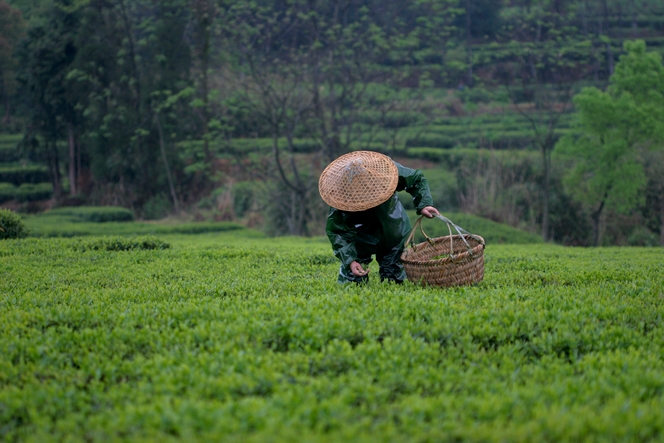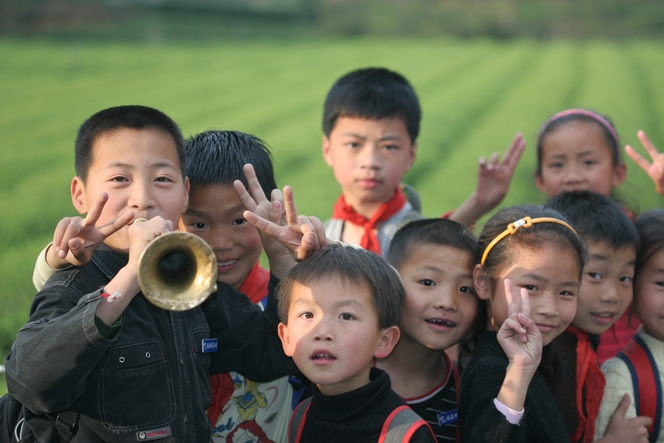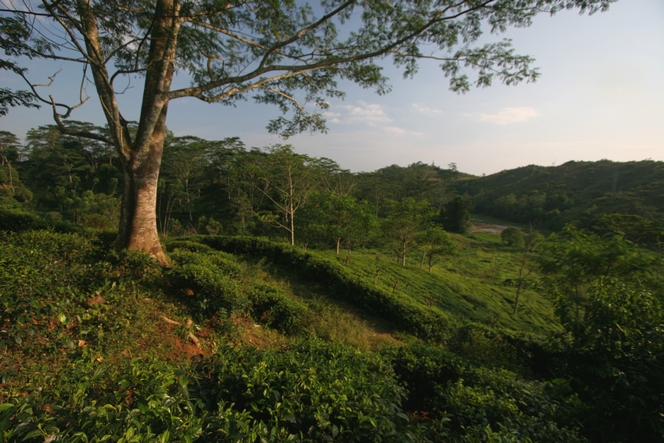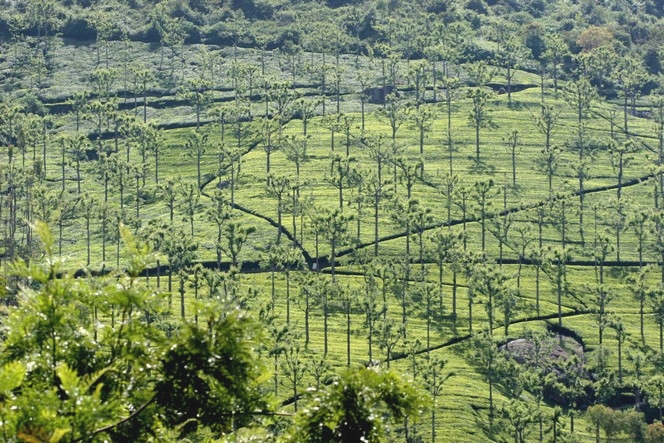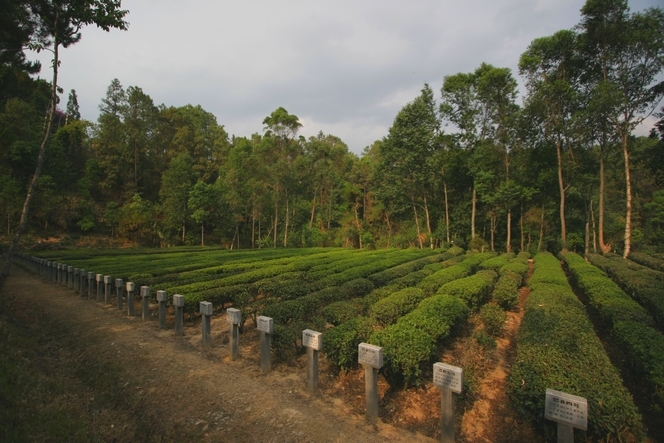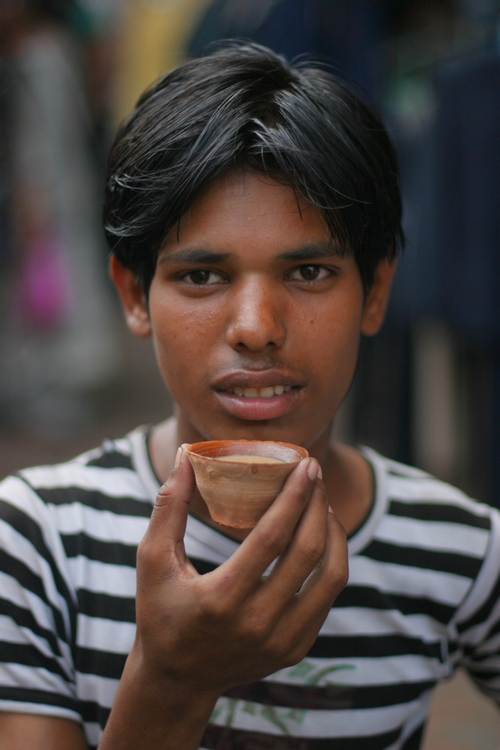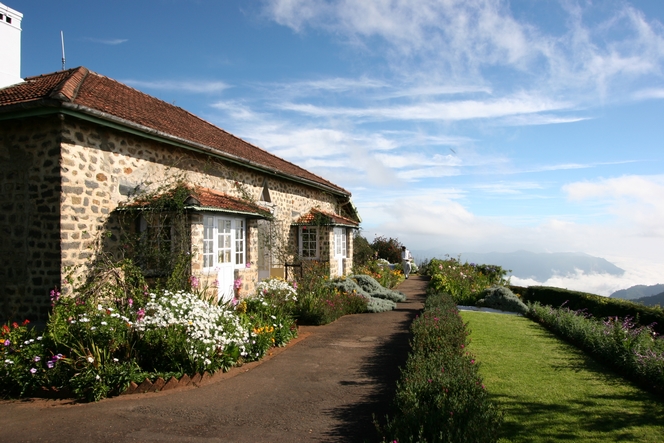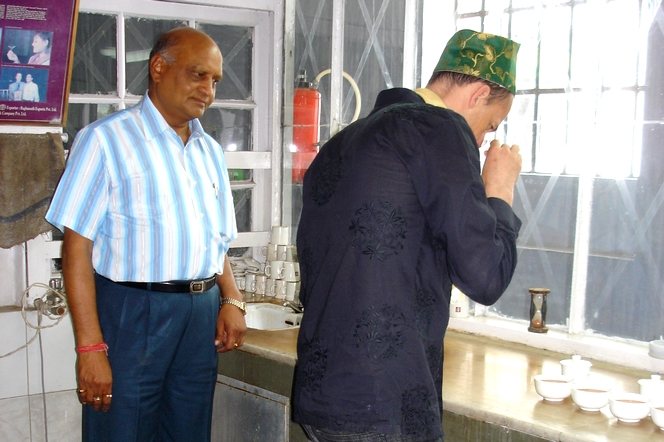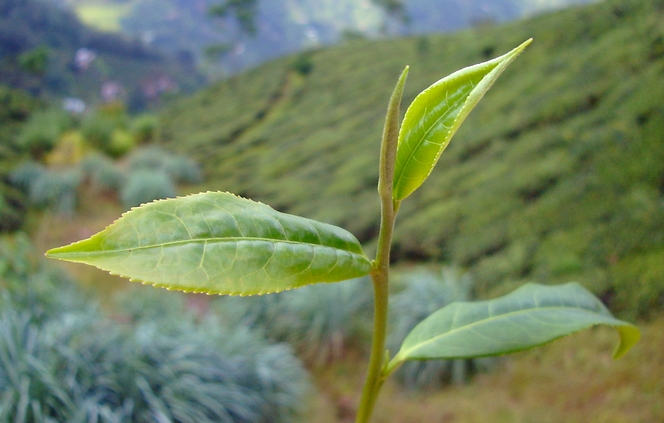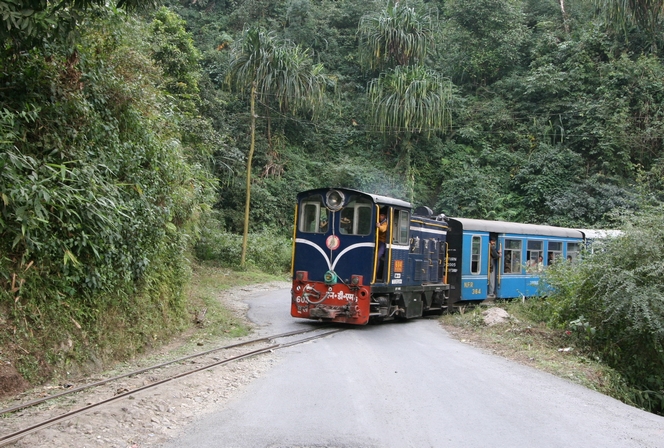Since the tea leaves are picked constantly, like here in the Gao Shan region of China, litteraly meaning “High Mountain”, the tea tree cannot grow any bigger. It is maintained, harvest after harvest, at the most convenient height: not too low, so the task is not made more difficult, and not too high, to stop parasites developing at the base of the plants. The tea trees are kept at between knee and waist height, depending on the region and the climate.
What a welcome in the tea plantation of Fuding !
Travelling is all about meeting other people. Many of the regions I’ve been to are not at all touristy. So the arrival of a foreigner is a big attraction for the children. Their reactions vary from surprise to hilarity. Here, in Fuding (China), I was welcomed with a cheerful and noisy fanfare! This strange bunch calls me “Big Nose”, as this is how Chinese people call us, whites.
“High grown” and “low grown” teas
In the south of Sri Lanka the altitude is low and the vegetation very dense. The tea plantations, which are small in this region, are surrounded by luxuriant vegetation. The teas produced here are known as “low grown”, unlike the teas grown in the very mountainous centre of the island, called “high grown”. But take note! A low grown tea is not of inferior quality, on the contrary. Because of the greater care taken when processing the tea leaves of low grown plants, they often achieve better prices at the Colombo auctions.
Protecting tea plants from the heat
As I was mentioning it in a previous post, tea requires delicate care. Tea plants appreciate a bit of shade, especially if the sun is strong. In the hottest regions, trees are planted to help the plants and give them some cover, like here in the Nilgiri mountains (India).
Contrarily to Darjeeling and Assam, the tea produced in the region is mainly black crushing-tearing-curling (CTC) tea and harvesting occurs all year round. This straightfoward process applied to low quality leaves makes a tea with little taste, often found in tea bags…
So, not very good teas in this region, but beautiful landscapes, charming little villages (Coonoor, Munnar), gardens growing spices, hills covered with cardamom plantations… An appealing region to say it short.
Cultivar is to tea what grape variety is to wine
All tea plants are members of the Camellia Sinensis species, but there are a great many cultivars, each with their own unique characteristics and qualities. Some are more resistant to the cold, for example, or to certain parasites. Others produce a more abundant crop.
Here, in Feng Qing, near Lincang (China), tea planters breed a wide variety of cultivars in order to experiment with grafting, for example, to produce new hybrid tea plants.
I visited this tea garden last year between two tastings of Pu Er, the main tea found in the region and manufactured from a cultivar called “Da Ye” (big leef).
Moreover, it’s here, near Lingcang, that the old tea and horse exchange road comes by.
Tea, a simple drink
Tea is a serious matter, it requires much hard work and science to grow it, harvest its leaves, wither them, heat them, roll them, oxidise them, dry them, sort them and more. But tea is not just about that. It is also a simple drink, an everyday act, an affordable pleasure. Here, in Kolkata, this street seller, just opposite the New Market, is enjoying his chai tea. He’s drinking it from a little throwaway earthenware cup.
Tea growing under British influence
It was the British who introduced and organised tea growing in India. They created large tea plantations called tea estates. Keen to retain the comforts of home, they built charming, typically British cottage-style houses.
When I visited the Thiashola Tea Estate in India, I was lucky enough to be able to stay in this tea grower’s house. It dates back to the nineteenth century. Nestled on the edge of the jungle, it overlooks the tea, the clouds and the Deccan plain. What a joy to arrive there, surrounded by flowers, to contemplate this unique landscape and enjoy its rare silence. A feeling of being at the edge of the world. Total isolation. The moment I loved best: at dawn, pulling on a sweater, going outside and sitting on the front steps, a bowl of steaming tea in my hands, admiring the glowing red sky as the sun rose.
I have just bought the first Darjeeling flush
The first Darjeeling flush is delayed for the third consecutive year. This time, the tea plantations suffer from drought: it hasn’t rained in Darjeeling since October 10th, 2009. Surprisingly, the sky is covered with clouds, the Kanchenjunga cannot even be seen. In the few irrigated plantations, the chill prevents the tea leaves from growing. Temperatures are still very low at night and I sleep with a hot-water bottle at the Planters Club!
So far, most of the tea gardens have only had one harvest (DJ1). Normally, they should have harvested enough tea leaves to make around ten lots (DJ10).
The first lot of Darjeeling harvest at North Tukvar has a floral bouquet of much greater quality than other plantations, even the best ones like Puttabong and Singbulli. I didn’t hesitate to buy this tea which is to arrive in Paris this week-end. It’s a clonal mixture of various cultivars. I don’t usually buy tea at the beginning of the harvest, but if it doesn’t rain in the next coming ten days, the amount available will be scarce.
This year, it might be is very small in comparison with previous years. It doesn’t seem to particularly worry the responsible of Puttabong and North Tukvar, Mr Somani (on the photo), who told me with his Indian-like fatalism: “If there’s a storm tea will grow very fast, only gods know…”.
Tea bud and fine plucking
Let’s get back to tea and how it is harvested. When the camellia is fully grown, the youngest leaves are plucked. In this photo you can see what is known as the “fine plucking”: the removal of the bud and the next two tea leaves. This is almost the best thing that can be done with tea: it’s a symbol of perfection.
Imperial tea plucking takes place in China in May. It is a very exceptional occurrence and only takes place in those rare villages that are said to produce the most famous teas. As for the plucking of the bud alone, this is sold under the name Silver Tips or Yin Zhen; it is extremely subtle and needs to be appreciated by connoisseurs. From left to right: fine plucking, imperial plucking and the bud alone.
The little Darjeeling train
These days, when everything has to be fast, modernisation has also affected the little Darjeeling train. For one of the daily services, the steam train lets out a big sigh and takes a break to make way for a diesel engine, as we can see here. So this is a bit of progress to be avoided, unless the journey itself is not your aim and all that matters is to get there quickly.

